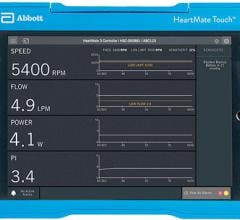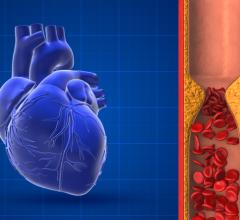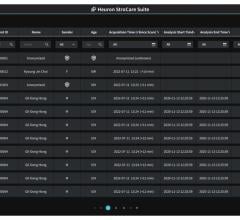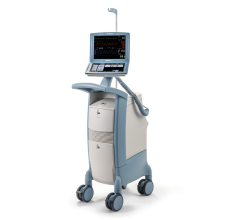
March 28, 2024 — Biosense Webster, Inc., a global leader in cardiac arrhythmia treatment and part of Johnson & Johnson MedTechi, announced the submission of the VARIPULSE Platform for Premarket Approval Application (PMA) to the U.S. Food & Drug Administration (FDA). The submission was supported by results from the admIRE study, a prospective, multi-center, non-randomized trial.
The VARIPULSE Platform is comprised of the VARIPULSE Catheter, a fully integrated variable-loop multielectrode catheter; the TRUPULSE Generator, a pulsed field ablation (PFA) generator; and the CARTO 3 System VARIPULSE Software, which provides full integration with the world's leading 3D cardiac mapping system. The VARIPULSE Platform is designed to enable pulmonary vein isolation with the versatility of a catheter loop, a simple generator user interface, and a mapping system that provides an intuitive, reproducible workflow with real-time visualization, contact indicator, and PF tagging mechanisms.
"The VARIPULSE Platform, differentiated by its CARTO 3 System integration and mapping capabilities, is part of a versatile portfolio of PFA tools that Biosense Webster is developing to meet the varied needs of electrophysiologists and their patients," said Jasmina Brooks, President, Biosense Webster, Inc. "Based on the results from the admIRE clinical trial, we are confident that this innovation has the promise to deliver significant value and differentiated capabilities, and become an important tool for the treatment of AFib."
Twelve-month outcomes data from the pilot phase of the admIRE study, which assessed the safety and efficacy of the VARIPULSE Platform among U.S. patients, were presented as a late-breaker at the 2024 AF Symposium.1 Among 20 patients who completed the 12-month follow-up visit, 100% achieved acute success from ablation procedures and 80% remained free from atrial arrhythmia recurrence at one year.1 No procedure or device-related primary adverse events were reported in the pilot phase of the study.1,ii For patients who had received ablation, median procedure and fluoroscopy times were 90.0 and 3.5 minutes, respectively, likely attributable to integration with the CARTO 3 System.1 Full admIRE study results will be presented later this year.
AFib is the most common type of cardiac arrhythmia and affects more than 6 million people in the United States and nearly 38 million people worldwide.2,3 Approximately 1 in 4 adults over the age of 40 are at risk for developing AFib.4 Despite these projections, many people are unfamiliar with AFib symptoms, available treatment options, and the importance of early treatment to avoid disease progression.5 Catheter ablation is a safe and effective procedure when drugs don't work to help restore the heart's incorrect electrical signals, which cause an abnormal heart rhythm.6
Learn more about Biosense Webster's PFA research and clinical evidence here.
About admIRE
The admIRE study (Assessment of Safety and Effectiveness in Treatment Management of Atrial Fibrillation With the Biosense Webster IRE Ablation System) (NCT05293639) is a prospective, multi-center, single-arm study to demonstrate the safety and long-term effectiveness of the VARIPULSE Platform when used for isolation of pulmonary veins in treatment of patients in the United States with symptomatic drug refractory paroxysmal AFib. Pulmonary vein isolation (PVI) was achieved using the VARIPULSE Platform. The study consisted of a pilot phase, which assessed initial device safety and effectiveness, and a pivotal phase, which assessed these against pre-specified performance goals. The primary safety endpoint was incidence of early onset (within seven days) primary adverse events; atrio-esophageal fistula (within 90 days); cardiac tamponade or perforation (within 30 days); and PV stenosis (within 12 months). Acute procedure success (defined as confirmed entrance block at the end of procedure) and freedom from documented atrial arrhythmia recurrence at 12 months were also assessed.
About the VARIPULSE Platform
The VARIPULSE Platform is Biosense Webster's Irreversible Electroporation ablation system. The fully integrated platform includes the VARIPULSE Catheter, TRUPULSE Generator, and CARTO 3 Mapping System VARIPULSE Service Pack Software. In January 2024, Biosense Webster announced that the VARIPULSE Platform received its first regulatory approval from the Japan Ministry of Health, Labour and Welfare for the treatment of symptomatic drug refractory recurrent paroxysmal AFib using PFA. In the U.S., the VARIPULSE Catheter and TRUPULSE Generator are currently investigational and are not approved by FDA. In Europe, the TRUPULSE generator received CE mark in late 2023 and the VARIPULSE Catheter received CE mark in February 2024.
For more information: www.biosensewebster.com
References:
|
i. Johnson & Johnson MedTech comprises the surgery, orthopedics, vision, and interventional solutions businesses within Johnson & Johnson's MedTech segment. ii. Primary adverse events were defined as myocardial infarction, thromboembolism, transient ischemic attack, diaphragmatic paralysis, pneumothorax, heart block, pulmonary edema, vagal nerve injury, pericarditis, major vascular access complication or bleeding, death, stroke, or any other cerebrovascular accident. Atrioesophageal fistula and PV stenosis occurring >7 days post ablation along with cardiac tamponade or perforations occurring within 30 days of the ablation procedure were also considered primary adverse events. |
|
1Newton D, Natale A, Mansour M, Nair D, Senn T. Pulsed Field Ablation Using a Variable Loop Circular Catheter with 3D Mapping Integration: Early Outcomes of the admIRE Study [abstract]. In: AF Symposium.; February 2-4; Boston. 2 Lippi G, Sanchis-Gomar F, Cervellin G. Global epidemiology of atrial fibrillation: An increasing epidemic and public health challenge. Int J Stroke. 2021 Feb;16(2):217-221. doi: 10.1177/1747493019897870. Epub 2020 Jan 19. Erratum in: Int J Stroke. 2020 Jan 28;1747493020905964. PMID: 31955707. 3 Kornej J, Börschel CS, Emelia J. Benjamin EJ, Schnabel RB. Epidemiology of Atrial Fibrillation in the 21st Century. Circulation Research. 2020 June;127(1):4-20. doi: 10.1161/CIRCRESAHA.120.316340 4 Staerk, et al. 2018 Lifetime risk of atrial fibrillation according to optimal, borderline, or elevated levels of risk factors: cohort study based on longitudinal data from the Framingham Heart Study. BMJ 2018;361:k1453 doi: 10.1136/bmj.k1453 5 Kuck KH, Lebedev DS, Mikhaylov EN, et al. Catheter ablation or medical therapy to delay progression of atrial fibrillation: the randomized controlled atrial fibrillation progression trial (ATTEST). Europace 2021;23(3)362-369. doi: 10.1093/europace/euaa298. 6 Natale, A. Reddy VY, Monir G, et al. Paroxysmal AF catheter ablation with a contact force sensing catheter: results of the prospective, multicenter SMART-AF trial. Journal of the American College of Cardiology, 2014;64(7),647–656. doi: 10.1016/j.jacc.2014.04.072 RELATED CONTENT: |

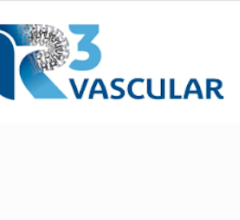
 November 07, 2024
November 07, 2024 

